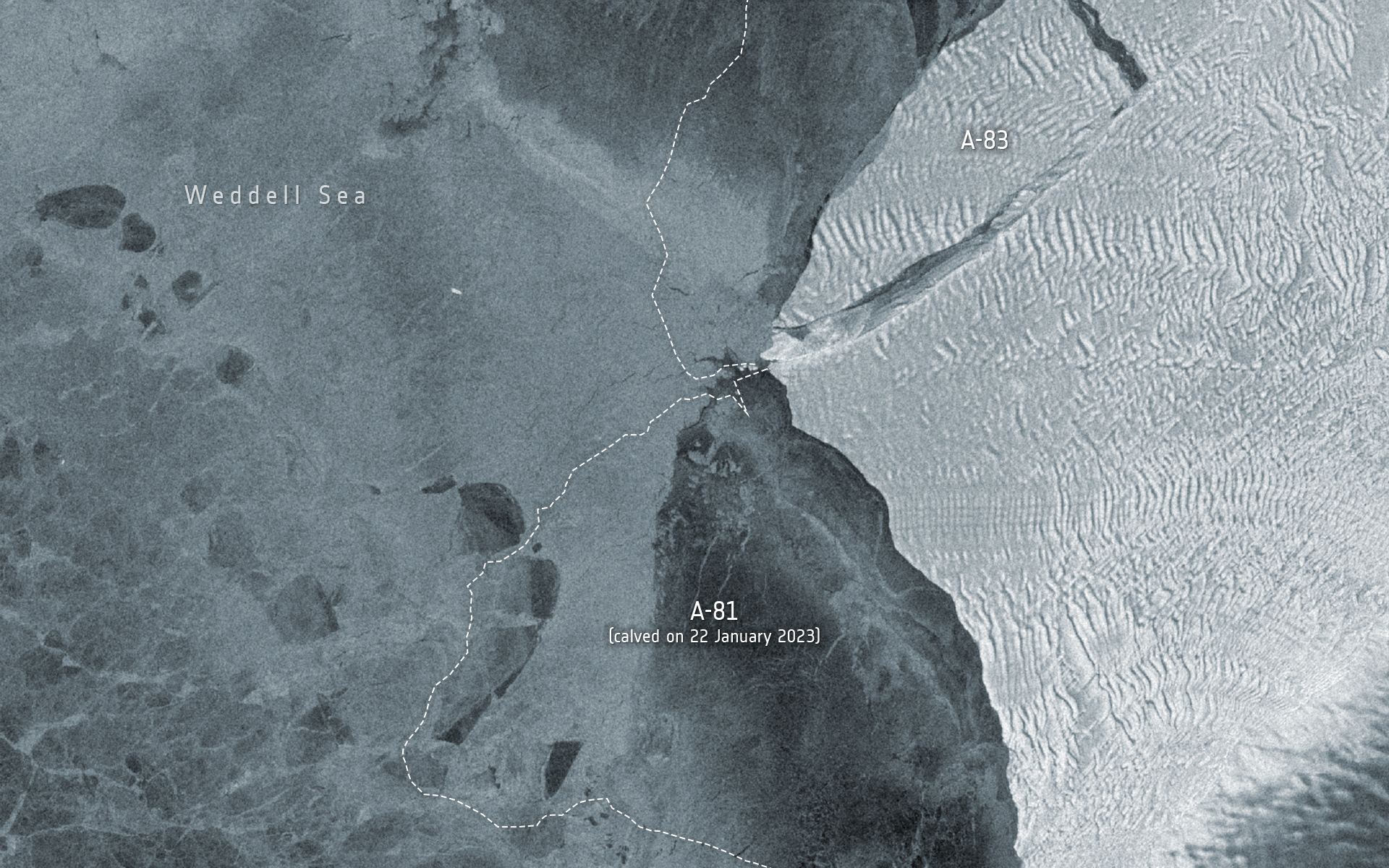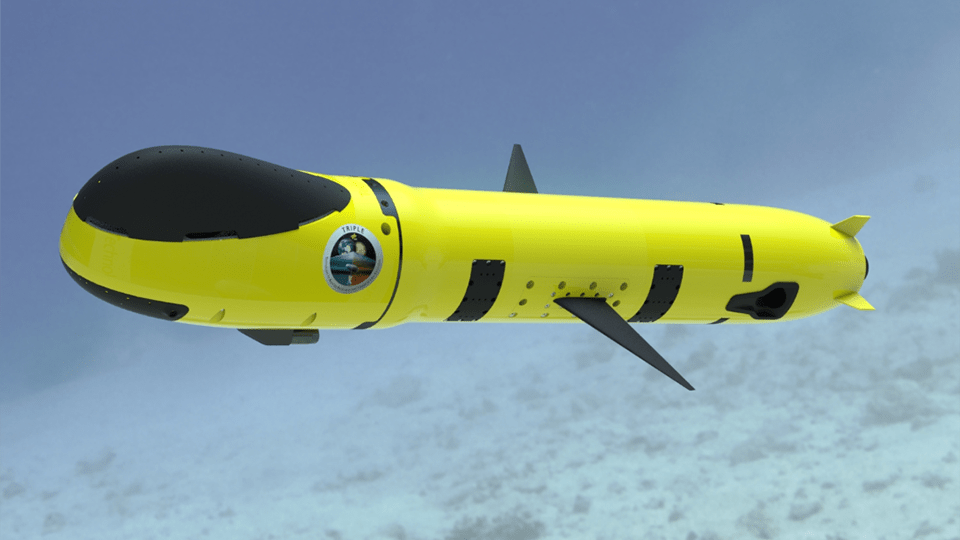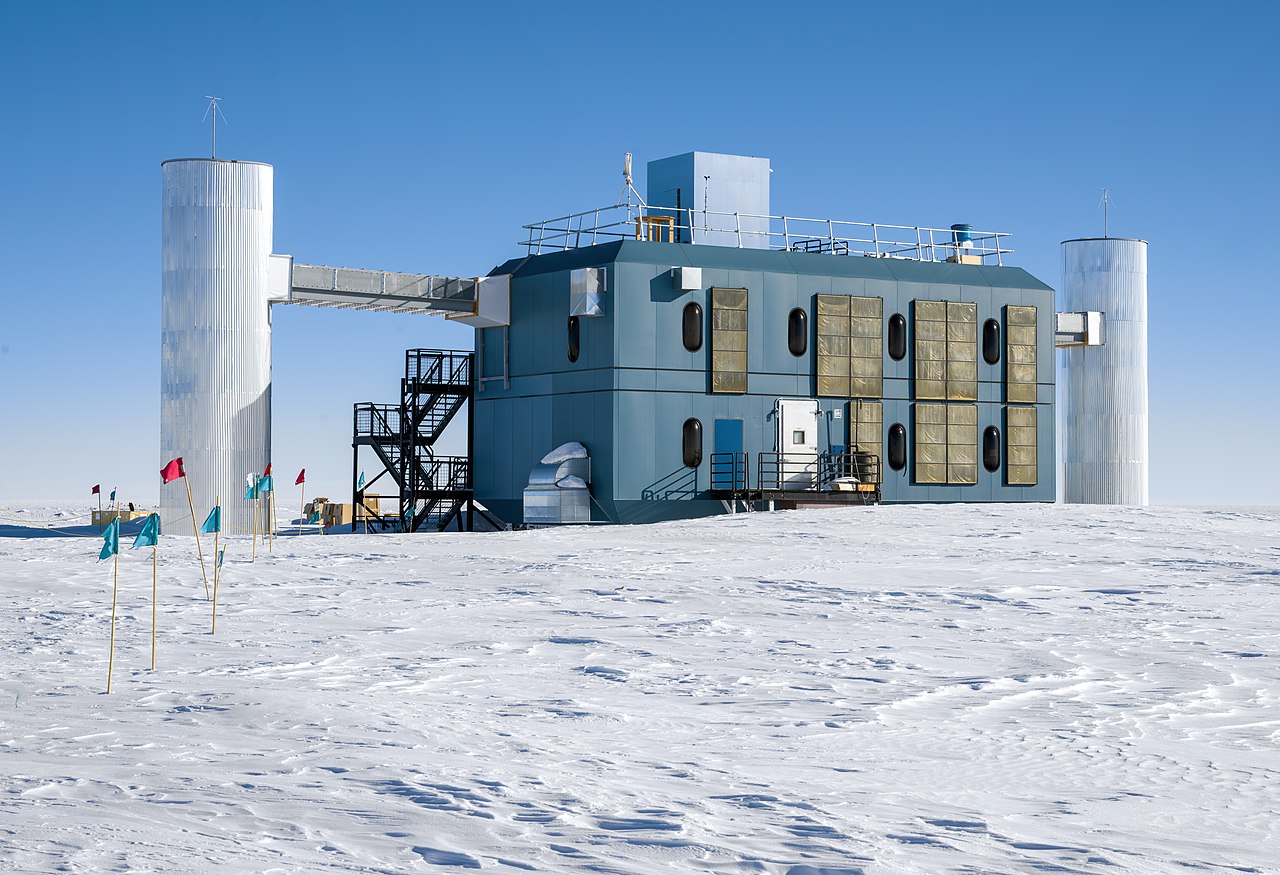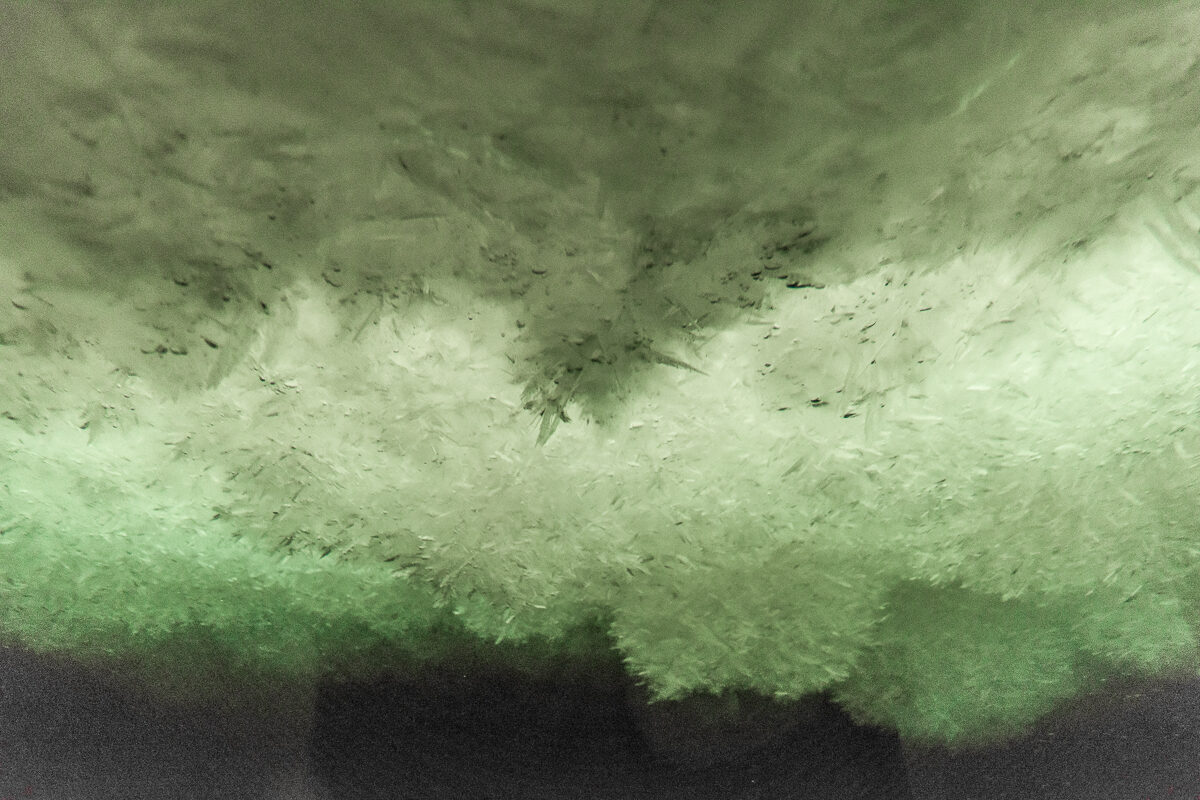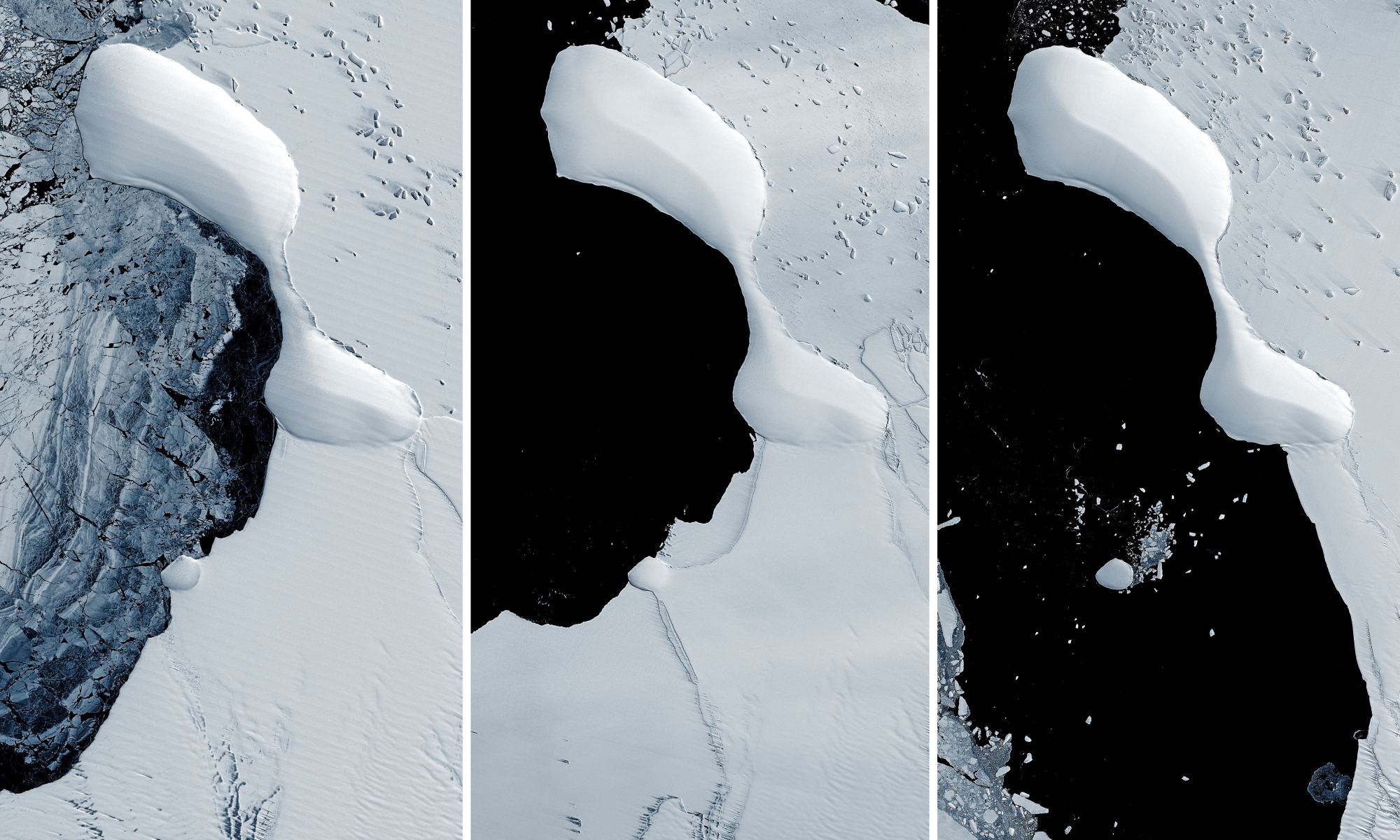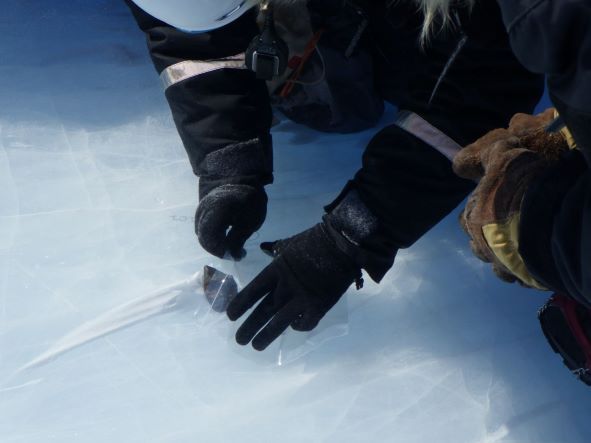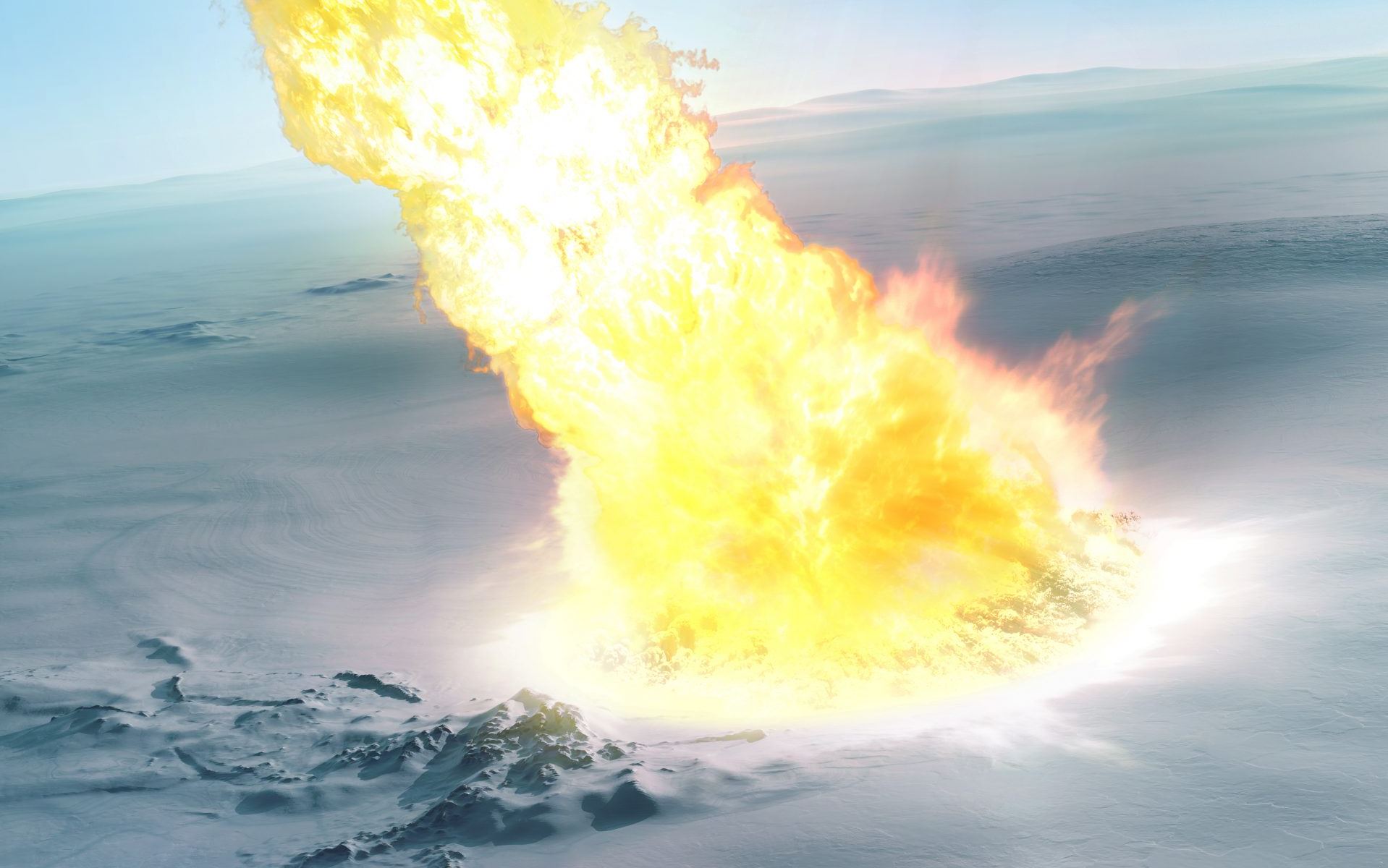For decades, evidence has been mounting that beneath the icy crust of Jupiter’s moon Europa, a vast ocean exists that could possibly host microbial life. As scientists prepare to send the Europa Clipper mission to orbit the Jupiter system, they are trying to learn more about the subsurface ocean and the ice that encompasses the moon.
One way to study Europa is to look at similar environments here on Earth. Scientists say that conditions found under Earth’s Antarctic ice shelf provides an analog to Europa’s subsurface ocean and can help them determine how the moon’s ice shell accretes and grows.
A new study published in the journal Astrobiology looked at a unique phenomenon in the Antarctic ocean called underwater snow. This is where ice floats upwards onto the bottom of the ice shelf and attaches in fluffy-looking mounds. This helps to replenish the ice shelf. The study infers that the same phenomenon is likely true for Jupiter’s moon, and may play a role in building and replenishing its exterior ice shell.
Continue reading “This is What a Robotic Explorer Might See When it Reaches Europa’s Oceans”


